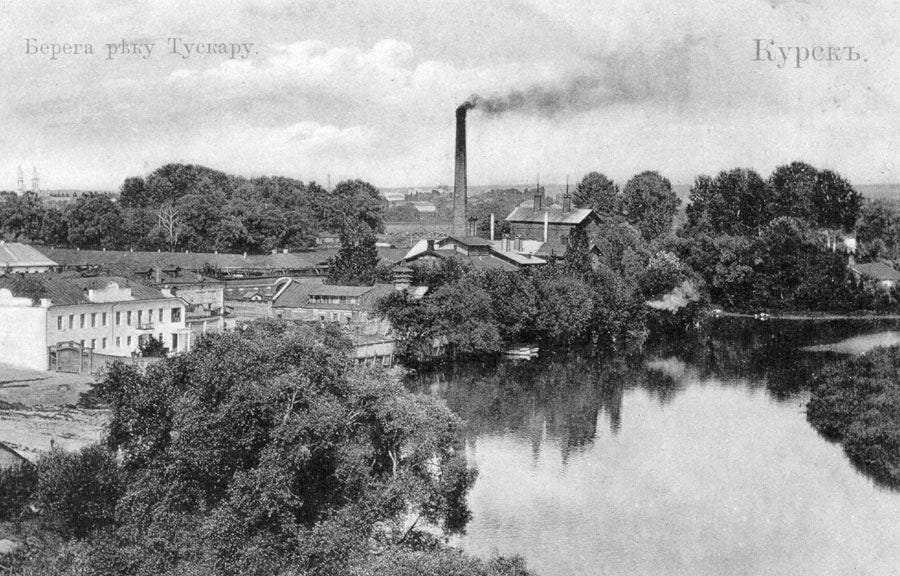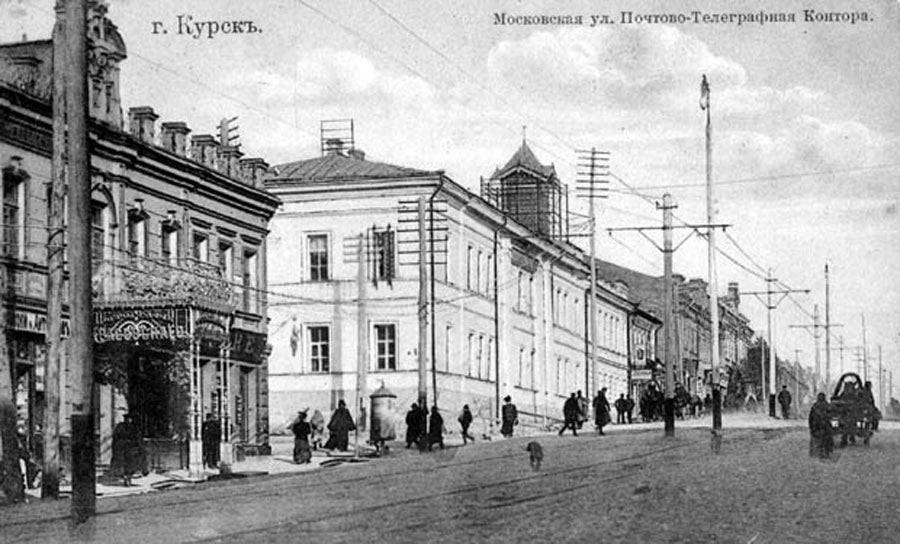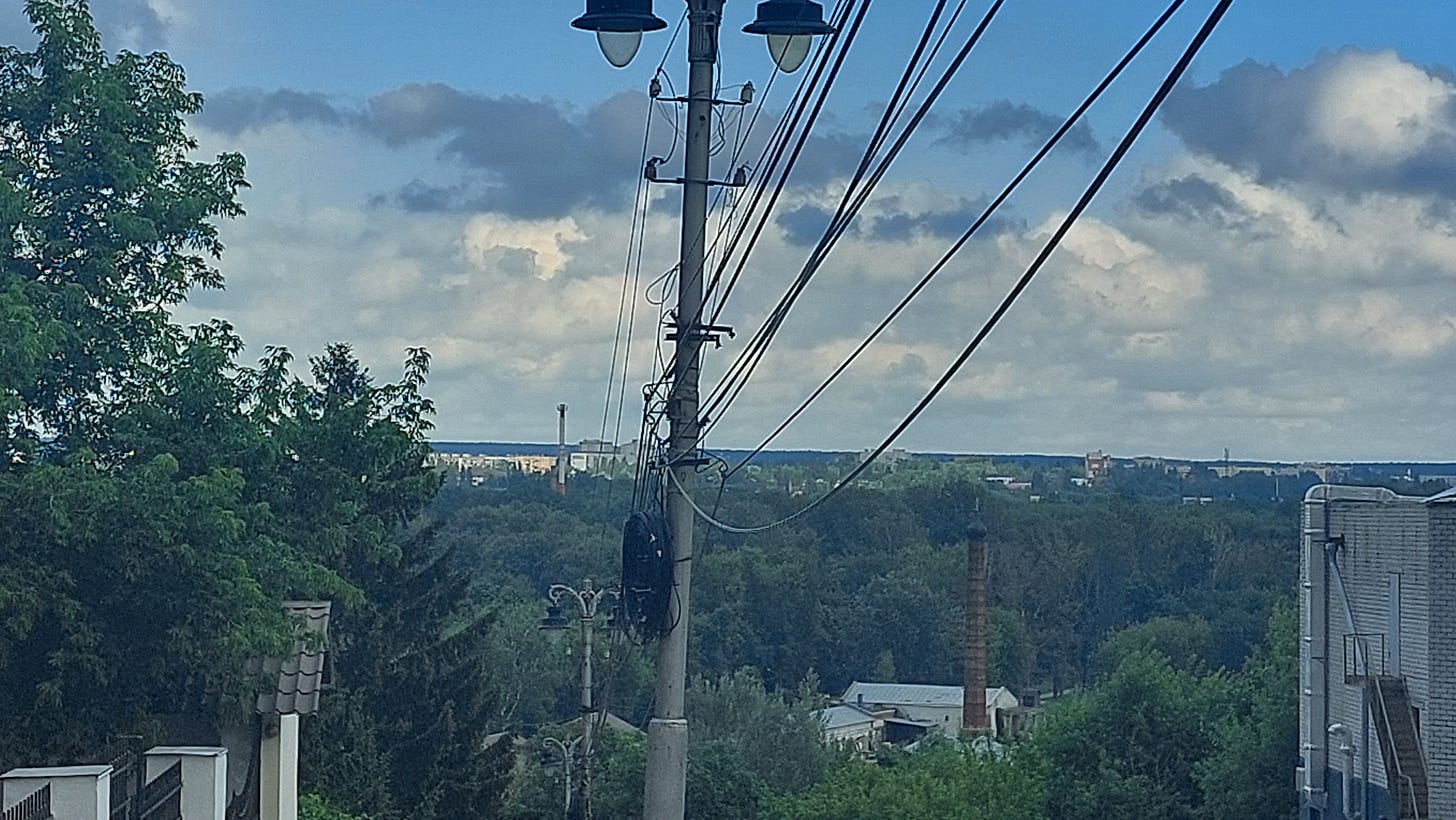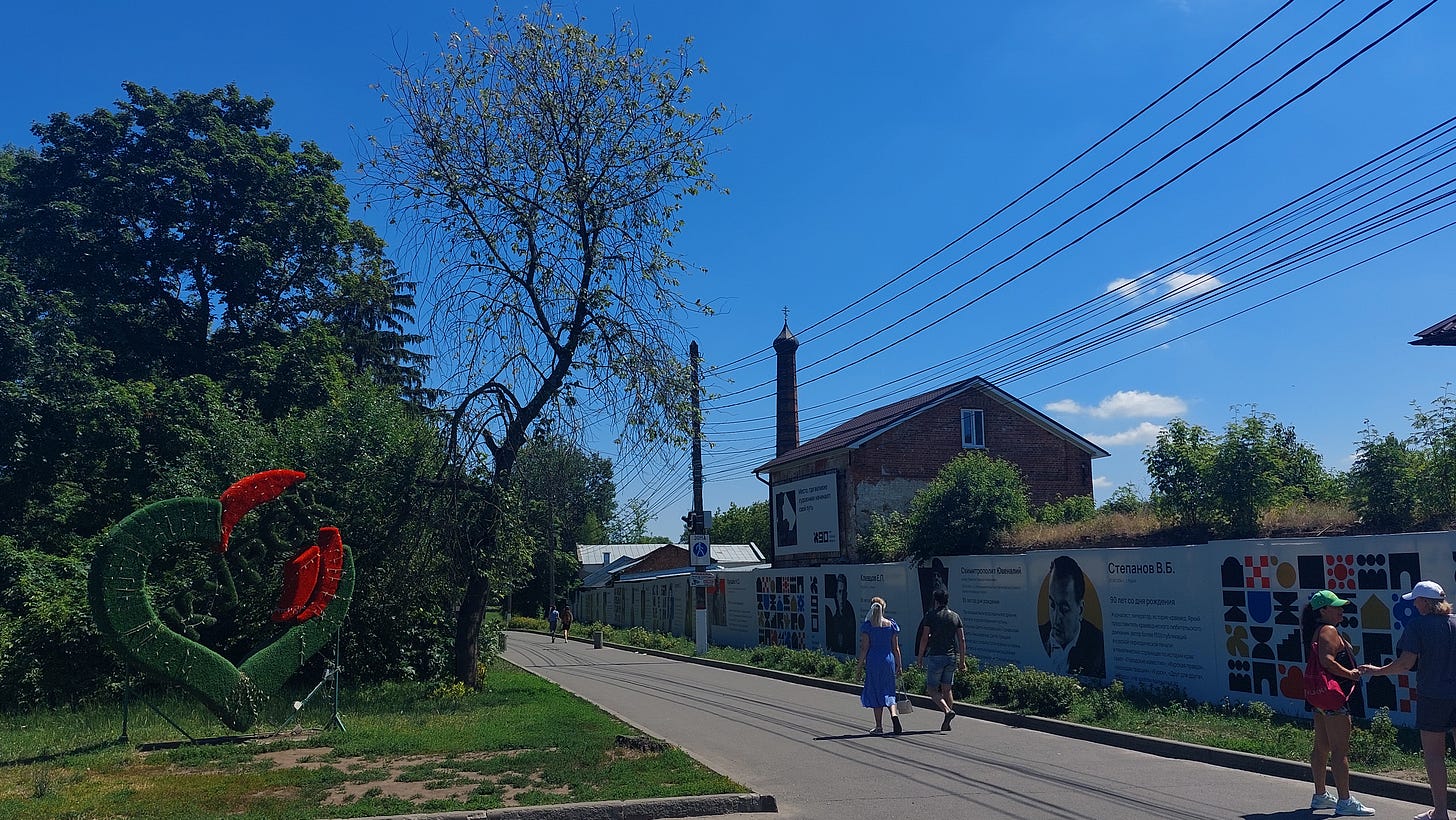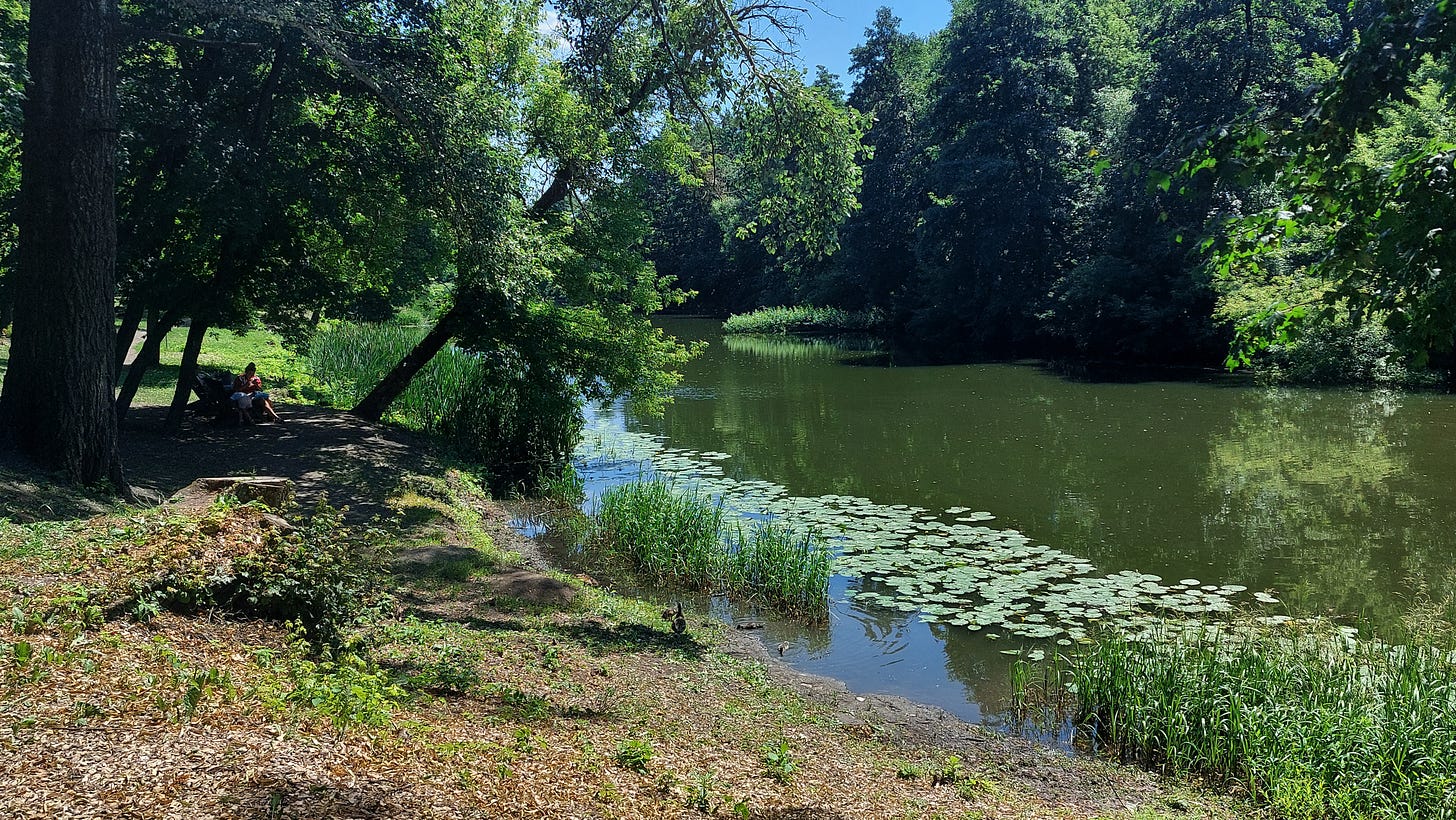Now finding yourself on Volodarskogo street, you look over the rooftops of private houses and see the forest, the cement grey bridge from Kirova street to Bocharovskaya in Streletskaya sloboda and most probably think that this forest has been here for centuries. But… the trees were planted just after Kursk was returned by the Soviet army. It was vastly ravaged due to a plenty of various factories worked alongside Tuskar river by the beginning of Kursk occupation.
Approaching the Boeva dacha, you see the remains of factories and guesthouses. A while ago the left part (remember a parking lot at entrance) belonged to the merchant of the Second Guild Alexander Petrovich Boev lived in the second half of the 19th century. Every citizen knew they can visit the public baths or rent a boat there — the main business of Alexander Boev.
In the chaos of the Russian Revolution the regulations were swept away and the area turned into an owner-free and no-thing-can-be-done-at spot: trees and sandy tracks… However, it still beckoned the residents of the city. In July 1926, the newspaper “Kurskaya pravda” [= The Kursk Truth] published some notes dotted down by one observant reader1 about the Boeva dacha:
Morning.
… Early morning… But there is already a crowd. It’s Sunday today and everyone unwittingly escapes the urban dust, office smoky stuffiness to get some fresh air or sunbath to blisters, go boating, or swim endless times.Afternoon.
It feels like someone turned up the heater. More people arrive. Summer poisoner’s are already here. Suga-a-a-ry ice-e-e-e-cream-m-m-m! Have a glass of delicious kva-a-a-a-s….From the female baths your hear ringing voices and notice a few peculiar ‘nature’-lovers have already settled down in the bushes and holding tight their binoculars watching the naked female bodies.
…Everywhere you see tanned athletic bodies. One by one, the boats set adrift on the greenish river. Someone is cooing playing a guitar.
Evening.
The shadows become longer, the Yamskoy train station gradually becomes designed with yellow diamon-like lights, you feel river cool streams of wind touch your back, frogs kick off heart-rendingly their arias… It’s stillness… The tall poplars have a quiet chitchat, fishmen doze off and couples in love hide in the bushes… The quietness is interrupted with an accident lady giggle or cigarette’s sparks erupt.
Nearby the Boeva dacha, on the cross-road to the right, Fyodor Ivanovich Pechke, Kursk merchant and Germany citizen, established a yeast and distillery factory in 1875. The full title is “Yeast, Distillery, and Vodka factory and Wholesale warehouse of bread alcohol, table wine, vodkas, nalivkas2 and liquors.” In the period before 1917 it was a quite famous place and from 1892 the goods had been delivered across all Russia, however over a half usually was demanded in Kiev and Chernigov regions. Pechke could make up a special alcoholic balsam as Riga herbal balsam.
Pechke owned a 2-floor house (see the photo above, his house is on the left with a balcony) where TSUM is located today. The first floor was served as a grocery store, the second floor was rented just for 700 rubles by the Kursk office of Imperial Russian musical society. During the First World War, the Pechke family was sent away to Ural’sk, his business was expropriated by the goverment due to his Germany residency. The production had completely stopped by the middle of 1980s and only since the end of 1990s the dilapidated buildings were given under protection to the Kursk and Rylsk diocese (or eparchy). Now in a peaceful riverside the housekeeping facilities and a small candle factory are located. On a factory smokestackwith an Orthodox makovka (or a cupola) you read “1892 year” — that’s the place of Pechke’s factory. However such an architectural solution is very disputed.
Gallery
an alcoholic berry beverage (18-20%) similar to alcoholic herbal tinctures; popular in Russia, Belarus and Ukraine





